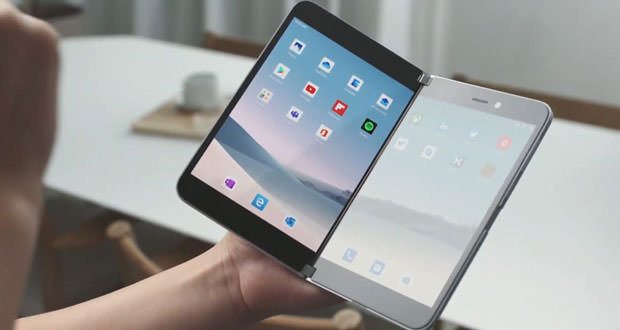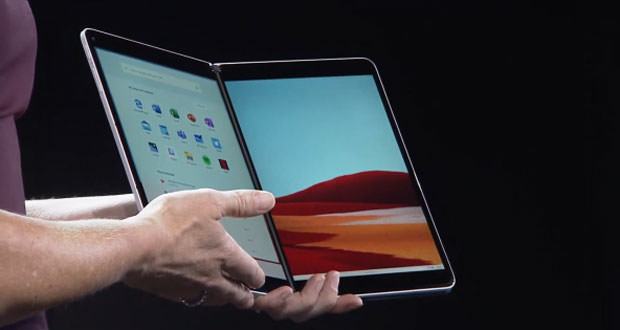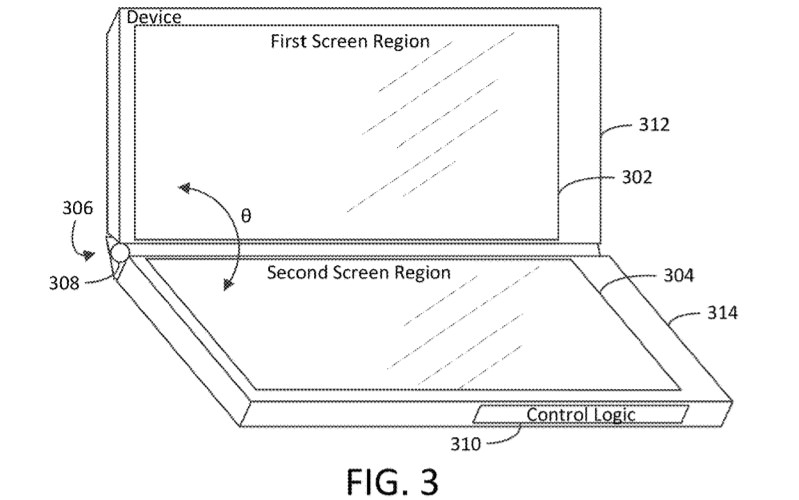Smartphones and folding screens: An alternative patent from Microsoft
Microsoft develops a patent that provides for the integration of a third screen which acts as a connecting element between the two main displays. An anticipation of what will come in the future?
A patent filed by Microsoft opens space for a different approach for the construction of mobile devices that can be closed, while also offering ample space for screens. The American company showed Surface Neo and Surface Duo last fall, products that can be closed on themselves and that integrate two screens separated by a thin frame.
This approach is in contrast with that adopted by some smartphone manufacturers, who have started to market their models equipped with a flexible screen: a frame is missing separating two physical screens as the display is unique, capable of being folded to reduce the overall dimensions of the device.
The technology adopted is still in its infancy and will certainly see important changes over the next few years. Still, clearly it represents one of the most promising avenues for the future development of this type of product.

The approach patented by Microsoft provides not to use a flexible screen, but to place two screens side by side, separated by a hinge which subtly creates a distinct physical separation between the two screens. This does not create problems when a specific application is sent on each of the screens, but when you want to use all the available surface with a single application, the final result is penalized by the frame that separates the two screens.
We see this well both in Surface Duo and in Surface Neo, devices that offer very classic book design and that maximizes robustness and productivity but, which is soiled, in terms of functionality, by the indispensable central frame.

A design of this type allows the device to be closed in both directions, leaving the two screens both visible on the outside or by closing the two displays one on top of the other for greater protection. It is precisely from this flexibility in the closure that the patent filed by Microsoft is born, which provides for the presence of a third screen which is actually mounted in the area of the hinge that connects the two main screens.
Positioned in this area, this narrow and long screen remains visible and usable when the two screens of the device are closed one above the other: in this way, it can operate as a system for managing messages and notifications, without the need for having to open the device to view the internal screens.
A design of this type certainly does not solve the problem of the junction point between the two main screens, which continues to provide for the presence of a frame that, small, is still visible, but increases the practicality of using dual-screen devices, which are by design both Surface Neo and Surface Duo.
Traditional touch screens continue to be used with this type of products, which are much more resistant than those currently adopted by smartphones with flexible screens.
The one filed by Microsoft is a patent that may not find a realization in products destined for marketing. The operating logic is interesting, especially as an alternative to the current implementations of the flexible screens of smartphones on the market.
The latter technology is destined to make considerable progress over the next few years, optimistically reaching the robustness and practicality that traditional screens have in use in most consumer electronics products.
Product prices and availability are subject to change. Any price and availablility information displayed on Amazon at the time of purchase will apply to the purchase of any products.

